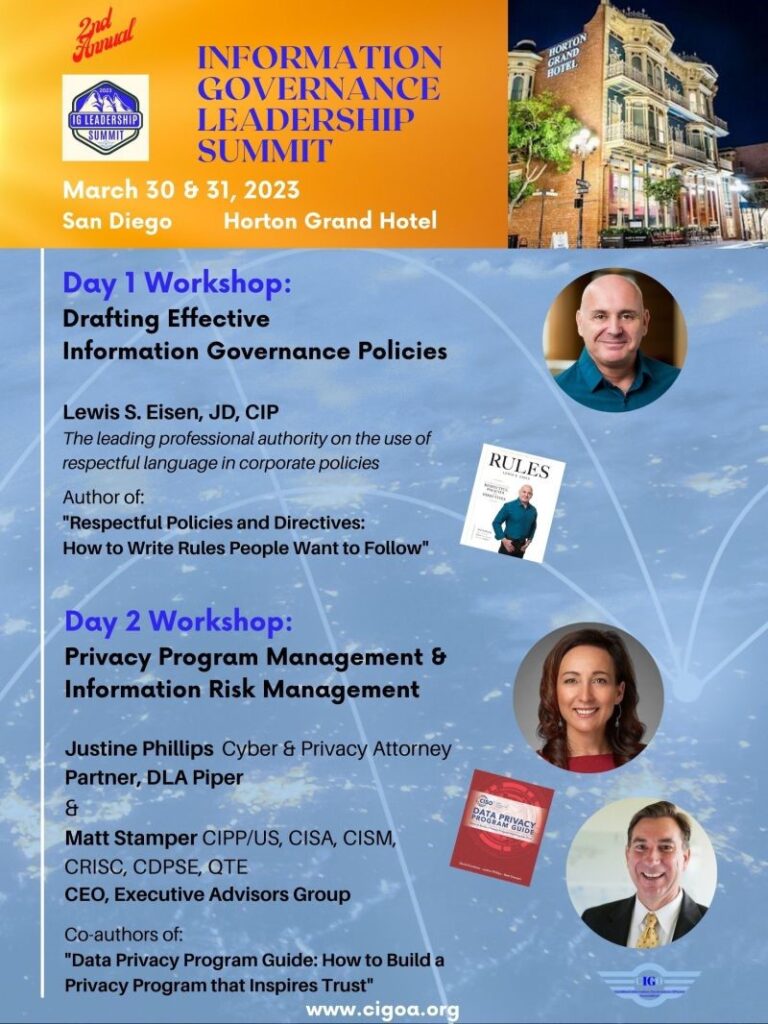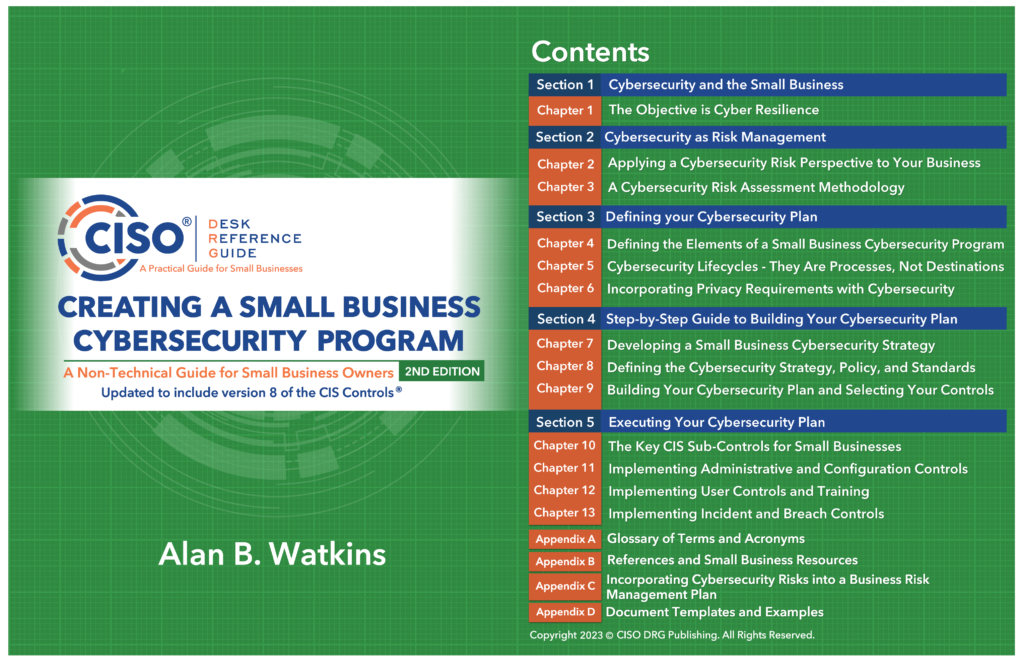Protect Your Practice and Protect Your Business
CISO DRG Publishing is proud to announce the publication of two new books in the Small Business Series. These are successor books to Bring Your Own Cyber, originally published in 2020. Protect Your Business: A Small Business Guide to Basic Cybersecurity is written for small businesses and Protect Your Practice: Basic Cybersecurity for Healthcare, Legal and Financial Professionals is tailored specifically to small independent offices is professional services.
 |
 |
The eight chapters in these books teach readers the basics. They use plain language to small owners and independent professionals how to become more secure. They include prudent steps readers can take right away to be more secure and every chapter comes with “Pro Steps” to take it to the next level.
Available for immediate sale, Matt, Gary, and Bill congratulate Bill and David. Good work, guys!




Recent Comments